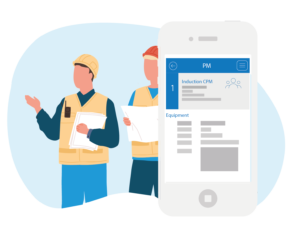How to create a successful tenant referral program
Securing great tenants is key to the success of any multifamily property. These are the tenants who pay their rent on time, respect property rules, get along with their neighbors, and maintain their units. They are essential to a positive community atmosphere and simplified property management.
Finding these dream tenants can be a real challenge for property managers and landlords. Traditional advertising and marketing methods may not always attract the type of tenants you’re aiming for. One effective strategy is to implement a tenant referral program. By incentivizing your current tenants, you can potentially access high-quality tenants to sign new leases.
In this guide, we’ll walk you through the steps to create a referral program that works. You will gain the information you need to enhance your tenant acquisition strategy and build a thriving community at your multifamily property.
What is a tenant referral program?
A tenant referral program is a marketing strategy that encourages existing tenants to recommend potential renters to their property manager or landlord. It will offer rewards to tenants for successful referrals that lead to new leases.
How does a tenant referral program work?
You will need to inform your current tenants that you offer an incentivized program. Your current tenants will then refer friends, family members, or acquaintances looking for a place to live. This recommended renter then goes through the standard vetting process. If the referral results in a new lease, the referring tenant will receive a reward.
Benefits of a tenant referral program
From strengthening your community to reducing vacancies, implementing a referral program offers numerous advantages for multifamily property management.
Increased tenant retention
Referral programs give tenants the opportunity to directly contribute to who lives in their environment. This allows tenants to have friends or family members close by, making tenants feel more connected and satisfied within your property. This sense of belonging can lead to higher tenant retention rates, as residents are more likely to stay where they feel valued and involved.
Fill tenant vacancies faster
Vacant units are not only costly, but they can negatively impact the perceived desirability and value of the property, making it harder to attract quality tenants. With the right rewards in place, current tenants will be incentivized to actively refer new renters. This will help you fill vacancies faster, with less effort and expenses.
Improve tenant lead quality
Referrals often result in higher quality leads because current tenants understand your property’s culture and standards. They are likely to recommend individuals who will fit well within the community, leading to more harmonious tenant relationships and reduced turnover rates.
Enhanced tenant engagement
A referral program actively involves tenants in their community. This involvement creates a sense of ownership and responsibility among residents, encouraging them to take better care of their surroundings and be more proactive about property upkeep. This enhanced engagement boosts community spirit and contributes to a more attractive and well-maintained property.
Cost-effective marketing
Referrals are powerful word-of-mouth advertising that can persuade potential tenants to apply to your property at a fraction of the cost of traditional marketing methods. The rewards or incentives provided to tenants for their referrals typically come at a lower expense than what you would spend on online advertising or signage. This makes these programs a cost-effective strategy for attracting new tenants, allowing you to allocate the marketing budget more effectively.
How to create a tenant referral program
Launching a referral program is a strategy that can bring numerous benefits to your multifamily property. To ensure its success, it’s crucial to lay out a comprehensive plan that details everything from the incentives you’ll offer to how you’ll track referrals.
Here is a step-by-step plan for implementing a referral program:
Define program goals
Starting with clear goals for your tenant referral program is crucial because it shapes the direction and effectiveness of your efforts. Common goals are filling vacancies more quickly, improving the quality of incoming tenants, or enhancing the sense of community among residents. By knowing what you want to achieve, you can tailor the program’s structure, incentives, and promotion strategies to meet those specific objectives.
Offer incentives or rewards
Offering rewards or incentives in your tenant referral program will help boost tenant participation. You can choose between a wide range of rewards to motivate your tenants to bring forward potential tenants. Typical incentives include rent discounts, cash bonuses, or gift cards to local businesses.
When choosing your incentives or rewards, there are a few things to keep in mind:
Rewards must align with program goals
You need to ensure that the rewards or incentives you offer align with your chosen program goal. Each goal will require a slightly different strategy and set of incentives.
For example, if your goal is to speed up the leasing process, you might offer immediate rewards for referrals. These rewards could include things like a one-time rent discount or a cash bonus. These incentives are attractive to tenants and can motivate them to actively seek out and refer potential new residents.
If you are more interested in boosting tenant retention, consider implementing rewards that foster a long-term relationship between your tenants and the property. This could involve offering upgrades within their units or extended lease terms at a discounted rate. These types of rewards thank tenants for their referrals and enhance their living experience, encouraging them to stay in your multifamily property.
Rewards must be cost-effective
You need to achieve a balance between offering rewards that encourage participation without impacting your bottom line. Consider offering rewards that have high perceived value to your tenants but are cost-effective for you. For example, maintenance services that you can provide at a lower cost due to existing relationships with service providers.
Rewards must be tailored to your renters
It’s important to tailor your rewards to the type of multifamily renters in your property to ensure they are motivated to participate. Understanding the demographics and preferences of your tenants allows you to offer incentives that genuinely appeal to them, increasing the likelihood of active engagement in the referral program. For example, if your community is family-oriented, family event tickets could generate more interest and participation.
Verify referrals
Verifying all referred potential tenants is essential for your tenants’ security and the financial stability of your multifamily property. This crucial step assesses an applicant’s suitability through a structured verification process. This typically involves conducting a credit check, examining their rental history, running a criminal background check, and confirming their identity. Verification ensures that referred individuals align with your property’s standards, maintaining the high quality of your tenant community.
Multifamily property management software can simplify this process. It automates the screening process, making it quicker and more efficient to filter through applicants and identify those who meet your criteria. This software also helps with managing the referral pipeline by enabling you to track referrals and keep your current tenants informed about the status of their recommendations.
Promote the program
To get tenant buy-in, you need to make your tenants aware of the program and clearly communicate the benefits they can receive for participating. You can utilize emails, newsletters, or your online communication channels to inform tenants of this incentivized program.
Sharing stories of tenants who have already benefited from making referrals can spark interest among others. These success stories act as real examples of how the program works and what’s in it for your tenants. This can encourage more tenants to take part and spread the word.
Find high-quality tenants with tenant management software
Incorporating multifamily property management software into your tenant referral program can streamline the process and enhance its effectiveness. This technology allows for easy tracking of referrals, management of rewards, and communication with tenants. The resident screening will also simplify the verification process, providing you with qualified applicants. With this software, it’s easier to encourage tenant participation to find high-quality tenants for your multifamily property.
FAQs about tenant referral programs
Take full control of the lead-to-lease processMultifamily software used by the top ten NMHC managers

Multifamily Tour Path Inspection Guide
Showing off your multifamily property is one of your first and best opportunities to “wow” prospective residents. As such, completing a tour path inspection is essential to a successful leasing experience. MRI Living is here to help you p…

